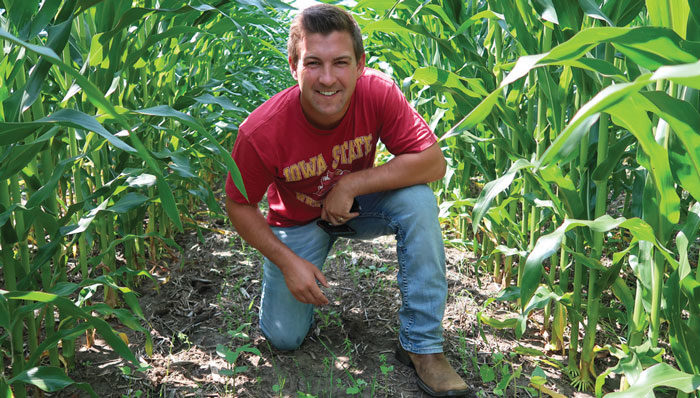No-Till Farmer
Get full access NOW to the most comprehensive, powerful and easy-to-use online resource for no-tillage practices. Just one good idea will pay for your subscription hundreds of times over.

CARBON NEGATIVE. The corn Mitchell Hora no-tills in Washington, Iowa, has a carbon intensity score of -10. A negative score helps the ethanol plant offset its carbon footprint, and in the future, it could translate to a tax credit for the ethanol plant and additional income for Hora. Photo by: Mitchell Hora
NO-TILLERS WHO ARE growing corn have an excellent opportunity to cash in on government demands to reduce the overall carbon intensity of the biofuels industry.
Mitchell Hora, founder of Continuum Ag, a soil health data intelligence company in Washington, Iowa, says while agriculture has been discussing carbon credits, ways to measure carbon sequestration and how to sell those credits for years, the real action today is measuring the carbon footprint of every bushel of corn growers produce.
“Your farm’s carbon footprint is a part of the next guy’s carbon footprint,” Hora says. “More specifically, it’s part of the next guy’s scope 3 carbon footprint.”
The U.S. EPA defines scope 1, 2 and 3 emissions. Scope 1 encompasses direct greenhouse gas (GHG) emissions from sources controlled or owned by an organization, such as fuel combustion in boilers, furnaces and vehicles. Scope 2 emissions are indirect GHG emissions associated with the purchase of electricity, steam, heat or cooling. Finally, the EPA considers scope 3 emissions as the result of activities from assets not owned or controlled by the reporting organization, but that the organization indirectly affects in its value chain.
“The ethanol plant’s scope 2 carbon footprint represents the plant’s indirect emissions, more specifically energy use in the production process whether it be based on fossil fuel or renewable energy,” Hora says. “Its scope 3 carbon footprint includes the plant’s supply chain, especially the corn going into the facility.”
About 40% of the U.S. corn crop goes into ethanol production…